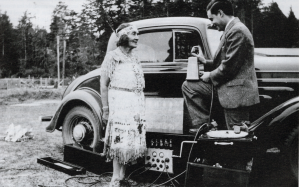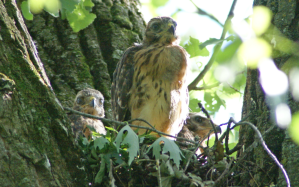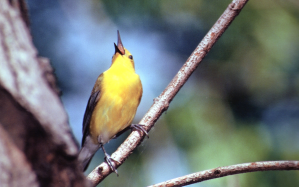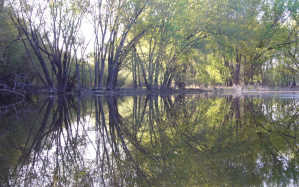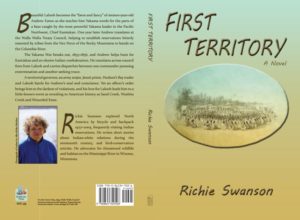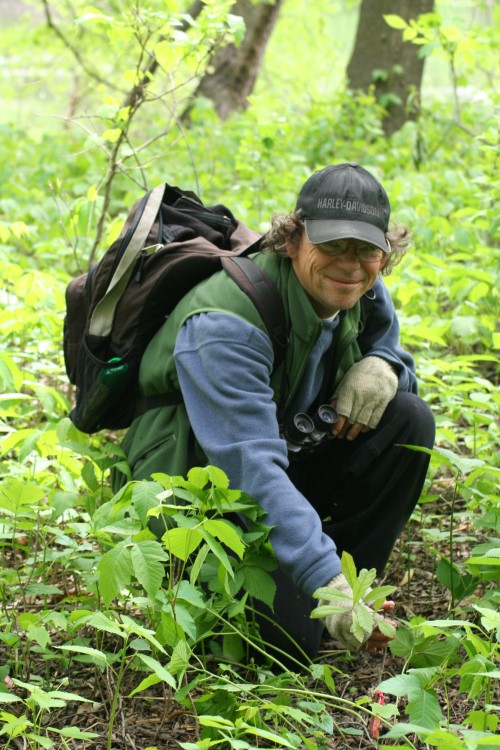COMMENTS ON
WINONA’S BLUFF TRAVERSE CONSERVATION AND RECREATION AREA NATURAL RESOURCES MANAGEMENT PLAN–2020 DRAFT
Submitted March 3 2020 by
CONSERVATION COMMITTEE OF THE WINONA BIRD CLUB
Committee Members
Barbi Bell
Roberta Bumann
Helen Davis
Julie Erickson
Lou George
Scott Lowery
Eric Nelson
Todd Paddock
Dave and Kathy Palmquist
Kay Shaw
Allen Blake Sheldon
Richie Swanson
David Ruff
David White
Contact: Richie Swanson, President, Winona Bird Club, [email protected]
The Winona Bird Club’s Conservation Committee thanks the City of Winona for commissioning the Bluffs Traverse Conservation and Recreation Area Natural Resources Management Plan (Draft February 2020). We commend the city and Barr Engineering on a whale of job—taking a crucial first step to ensuring conservation amid recreational access.
The Winona Bird Club’s Conservation Committee (WBCCC) recognizes an optimum standard for conservation amid recreational access in the bluff lands: the Great River Bluffs State Park Management Plan. The Great River Bluffs plan offers no off-road bicycle or climbing opportunities. It encourages partnerships “to disperse higher impact uses across the region, and upon less fragile areas.” The park’s trails do not descend the bluffs in order to protect “the fragility of the soil and natural communities.”
The WBCCC recognizes the city’s interest in developing the bluff lands for multi-use, including recreational trails and habitat protection. We find several of the aspects of the city’s Bluffs Traverse draft especially important for guiding trail development that is ecologically sound. We support especially the Ecological Quality Rankings (p. 18) and the Adaptive Management Plan (p. 38) of the city’s Bluffs Traverse draft. We further recommend:
1. Permanent Protective Designations for “A” rankings or entire bluff lands—
–Apply for Scientific Natural Area designations for sensitive habitats.
–Designate the bluff lands a “park reserve.”
–Reserves in the Three Rivers Park District in Hennepin County allow no more than 20% developed, 80% in natural state.
–Conduct a natural resources inventory based upon scientific protocols of the Minnesota Biological Survey.
–Conduct inventories before and after trail creation to identify impacts of recreational trails.
–Continue to identify and adopt guidelines for Species of Greatest Conservation Need.
–Establish buffer zones based upon scientific literature.
–Direct trails away from landscape features such as cliffs and contiguous habitats, and any seeps and rare-plant communities.
–Search further for seeps and algific slopes.
–Do not fragment “A” areas with recreational trails.
2. Implement Restoration Plans for “B” rankings–
–Follow 4.1 Regeneration Priorities and 4.2 Native Plant Community Regeneration Standard of the Bluff Traverse plan.
–See specific grant opportunities below.
–Burn prairies in accord with state and county permits, and in consultation with a natural resource partnership.
–Design trails to act as fire breaks for burns.
–Manage deer population, invasive plants and logging.
3. Include Natural Resource Experts, not just IMBA standards, in Trail Design for “C” and other Rankings—
–Create professional partnerships and a natural resource commission or department (see below).
–Reduce impact of some trails to foot traffic only, no bicycles.
–Facilitate Consensus with Citizen Groups.
–Assess the status of the bald eagle nest in the bluffs opposite west Lake Winona, and comply with Bald and Golden Eagle Protection Act.
4. Enhance the Adaptive Management Approach by Promoting and Planning for Conservation Equally with Recreation—
–Apply for Conservation Grants in cooperation and simultaneously with Recreation Grants—
–State Wildlife Grant Program (justified by Species of Greatest Conservation Need in accord with Minnesota’s Wildlife Action Plan 2015-2025).
–Federal Recreation Trail Program (minimize trail impact).
–Conservation Partners Legacy, Expedited Conservation (habitat restoration).
–Conservation Partners Legacy, Traditional (habitat restoration).
–Plan and Promote Recreation friendly to Species of Greatest Conservation Need.
— Minnesota Land Trust partnered with Duluth to protect nature while creating outdoor recreation access.
–Enhance public’s understanding of Species of Greatest Conservation Need and their habitats.
–Manage Timber Rattlesnakes in consultation with Barb Perry, MN DNR Nongame Management Program, or comparable official.
–Do not publicize rattlesnake sites.
–Direct trails away from all rattlesnake sites.
–Establish buffer zones.
–Provide Educational Signs about Snakes at entry sites to trail system, away from rattlesnake sites.
–Create partnerships with conservation organizations.
–E.g. Minnesota Land Trust and City of Duluth.
–E.g. U.S. Fish and Wildlife Service and Aghaming Park.
–Partner with scientific and protective assistance.
–Enhance and Restore Habitats as Classified in Draft Plan.
–Identify and Address Emerging Needs of Species of Greatest Conservation Need.
–Provide Conservation Education and Outreach simultaneously with Recreational Development.
–Create a department or commission such as the Three Rivers Natural Resource Management department in Hennepin County.
–Rely upon Conservation Expertise equally with Recreation and Tourism Expertise. Resources below:
–Great River Bluffs State Park Management Plan.
–Minnesota Wildlife Action Plan 2015-2025
–Tomorrow’s Habitat for the Wild and Rare: An Action Plan for –Minnesota’s Wildlife. Bluff lands Subsection Profile.
–Provide Educational Signage/Brochures that addresses Conservation and Natural History as well as recreation access.
–Provide “Stay-on-trail” Signage.
5. Open up the Democratic Process to Park Input.
–Improve the logistical setup and input opportunities of the Feb. 5 presentation of the Bluff Traverse plan.
–Speakers should face and address the public as well as government officials.
–Allow citizens, not just government officials, to ask questions and speak comments.
–Citizens had trouble viewing maps and hearing presentation.
–Publicize and hold public hearings and open meetings for park developments.
6. Editorial Corrections/Comments on the Bluff Traverse draft plan.
–Section 1.1 Natural Resource Vision
–Add “and restore” to “To preserve the unique character.”
–Section 1.3 Historic Vegetation
–Replace “sandy loam soils of the bluff lands” with “sandy loam soils found in portions of the bluff lands.”
–Section 1.4 Changes Brought About…
–The location of “Downtown Winona” was a sand prairie and did not have many “large specimen trees of the Big Woods.”
–Add “logging for steamboat fuel” to changes in landscape.
–Section 2.1 Oak Forest
–Overpopulation of deer also degraded the oak forest’s ground layer, not just worms.
–Section 2.1 Dry Bedrock Bluff Prairie
–Red cedar also crowds out prairie grasses and forbs.
–Section 2.1 Oak Savanna, Lower Picture
–Change “sunlight depended” to “sunlight-dependent.”
–Figure 2.3 Succession of Grassland and Oak Savanna
–Barn owl is no longer a characteristic species. Is now listed as “accidental’ by Minnesota Ornithological Union.
–Section 2.2.1 Topography, Ravines and Bluffs
–Long periods of uninterrupted erosion also formed topography, as well as wind, water and glacial activity.
–Section 2.2.2
–Ancient seas deposited sediment that became the bedrock of the area.
–Delete “red-shouldered hawk” and add “peregrine falcon” to birds that utilize bluffs. The red-shouldered hawk breeds in bottomlands adjacent to bluffs.
–Lingering ice on the Ice Wall in March and early April diminishes habitat of the peregrine falcon, which utilizes Sugarloaf, other cliffs and parking lots of nearby Perkins Restaurant etc.
–Figure 2.7 USCS Soils Classification
–Colors of the key do not match map. This makes the map difficult to understand.
–Figure 3.1 Ecological Guidelines for Trail Placement
–Include Timber Rattlesnake management to guidelines
–State the goal of preserving rattlesnake habitat from disturbance.
–This protects both people and rattlesnakes.
–Section 3.8 Earthworms
–Encourage citizens NOT to release worms after fishing.
–Section 4 Management Recommendations: Objectives
–Add “Ensure the survival of native wildlife populations.”
7. Bird Conservation in Bluff lands.
–Promote the Ecological Value of the Mississippi River Flyway as well as Outdoor Recreation.
–Achieve the Natural Resource Vision of the Bluff Traverse plan by following Professional Guidance from Scientific Studies:
“Although management options to control trail use in non-staffed protected areas are limited…protected area managers could design and maintain a trail network that would minimize impacts on resident wildlife, while providing recreational opportunities for visitors, by designing their trail networks to maximize the area of trail-free habitat.” (Thompson, Bill. Recreational Trails Reduce the Density of Ground-Dwelling Birds in Protected Areas. Environmental Management 2015 55: 1181-1190. Emphasis is ours.)
“Visitor guidance is an effective conservation measure to reduce the negative impacts of the recreationists. In addition, prevention of trail construction in undeveloped natural habitats would reduce human access, and thus disturbance, most efficiently. (Botsch, Yves. et.al. Effect of Recreational Trails on Forest Birds: Human Presence Matters. Frontiers in Ecology and Evolution. November 2018. Emphasis is ours.)


